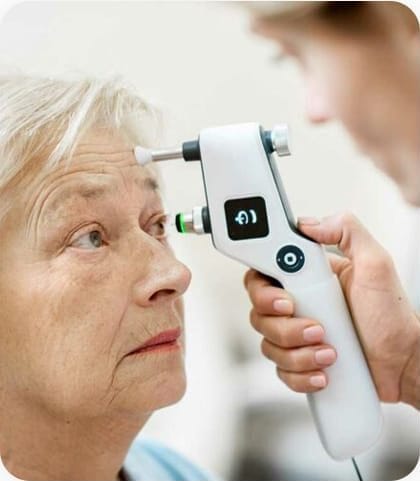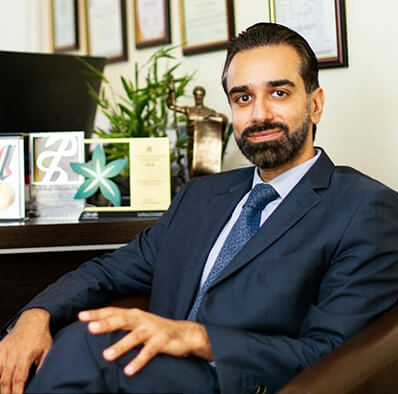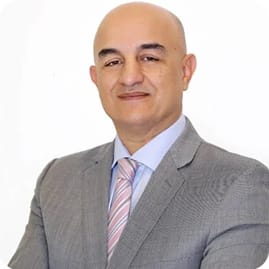
Experience Vision Freedom:
Ocular Prosthetic Services in Dubai
Home | Services | Restore Confidence and Appearance: Ocular Prosthesis Services
Imperial Health provides comprehensive care and support for individuals requiring ocular prostheses. Our dedicated team of specialists is committed to helping patients regain a natural appearance and restore their confidence following eye loss or enucleation. We offer personalized services, from initial consultation and evaluation to custom prosthesis fabrication and ongoing care.
Our Services
Our Ocular Prosthesis Services encompass the entire process, ensuring a smooth and supportive experience for our patients:
Comprehensive Evaluation: We conduct a thorough evaluation to assess your individual needs and determine the best approach for your ocular prosthesis. This includes discussing your medical history, examining the socket, and taking necessary measurements.
Custom Prosthesis Fabrication: We work closely with experienced ocularists to create a custom-made prosthesis that closely matches the size, shape, and color of your natural eye. We use high-quality materials to ensure comfort, durability, and a natural appearance.
Prosthesis Fitting and Adjustment: Our team will carefully fit and adjust your prosthesis to ensure a comfortable and secure fit. We will provide detailed instructions on how to care for your prosthesis and maintain its appearance.
Ongoing Care and Support: We offer ongoing care and support to our patients, including regular checkups, adjustments, and guidance on prosthesis maintenance. We are here to answer your questions and address any concerns you may have.
Comprehensive Evaluation: We conduct a thorough evaluation to assess your individual needs and determine the best approach for your ocular prosthesis. This includes discussing your medical history, examining the socket, and taking necessary measurements.

Custom Prosthesis Fabrication: We work closely with experienced ocularists to create a custom-made prosthesis that closely matches the size, shape, and color of your natural eye. We use high-quality materials to ensure comfort, durability, and a natural appearance.
Prosthesis Fitting and Adjustment: Our team will carefully fit and adjust your prosthesis to ensure a comfortable and secure fit. We will provide detailed instructions on how to care for your prosthesis and maintain its appearance.
Ongoing Care and Support: We offer ongoing care and support to our patients, including regular checkups, adjustments, and guidance on prosthesis maintenance. We are here to answer your questions and address any concerns you may have.
Why Choose Imperial Health
Key Benefits of Choosing Imperial Health for Ocular Prosthesis Services:
Specialized Expertise
Our team includes experienced professionals dedicated to providing compassionate and expert care.
Customized Solutions
We understand that each patient is unique. We provide customized solutions tailored to your individual needs and preferences.
High-Quality Materials
We use only high-quality materials to ensure the comfort, durability, and natural appearance of your prosthesis.

Supportive Environment
We provide a supportive and compassionate environment where you can feel comfortable discussing your needs and concerns.
Why Choose us
Unique Features and Advantages

Collaboration with Ocularists
We collaborate with highly skilled and experienced ocularists to ensure the highest quality of prosthesis fabrication.

Focus on Patient Education
We prioritize patient comfort throughout the entire process, from evaluation to ongoing care.

Comprehensive Care
We offer comprehensive care, including evaluation, fabrication, fitting, adjustment, and ongoing support.
Our testimonials
1000+ Satisfied Patients
Had the best experience at Imperial Healthcare. Had my eyes checked by Dr Vinod, who was very helpful and professional and Kumar was always incredibly friendly.

Had the best experience at Imperial Healthcare. Had my eyes checked by Dr Vinod, who was very helpful and professional and Kumar was always incredibly friendly.

Had the best experience at Imperial Healthcare. Had my eyes checked by Dr Vinod, who was very helpful and professional and Kumar was always incredibly friendly.

Previous
Next
Our team
Meet our doctors
Our administration and support staff all have exceptional people skills
and trained to assist you with all medical enquiries.

Dr. Vinod Gauba
Medical Director

Dr. Nanis Soltan
MBBS, Msc

Dr. Samer Hamada
Consultant Ophthalmologist

Dr. Qasim Aref Qasem
Consultant Ophthalmologist
Enquiry Form
Book an Appointment
faqs
Frequently asked questions
An ocular prosthesis, or artificial eye, is a custom-made device designed to replace a missing or damaged eye, restoring appearance and confidence.
Individuals who have lost an eye due to injury, disease, or congenital conditions may benefit from an ocular prosthesis.
It is crafted using precise measurements, silicone injections, and high-resolution imaging to match the natural eye’s color and structure.
Yes, modern prostheses are designed to mimic the movement of a natural eye, providing a realistic appearance.
No, the fitting process is painless and involves silicone injections to ensure a comfortable and accurate fit.
While it does not restore vision, it helps improve appearance and may enhance visual independence with magnifying instruments.
High-quality materials like polymethylmethacrylate (PMMA) are used to ensure durability, reduce allergic reactions, and prevent unwanted secretions.
With proper care, an ocular prosthesis can last for many years, though periodic adjustments may be needed.
Recovery is minimal, and patients can resume normal activities shortly after the fitting.
You can schedule a consultation through the website or contact the clinic directly.
